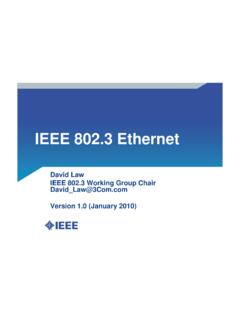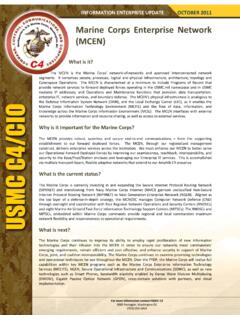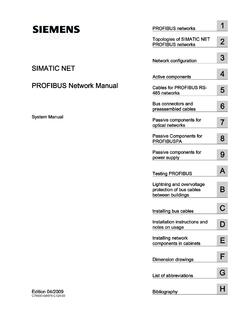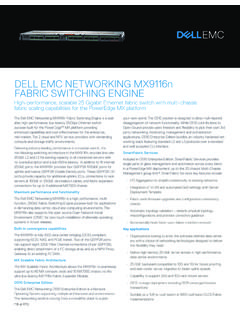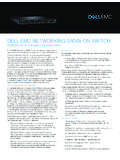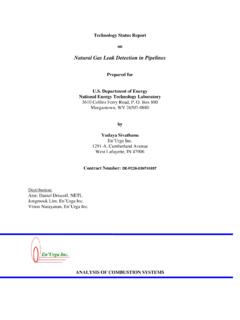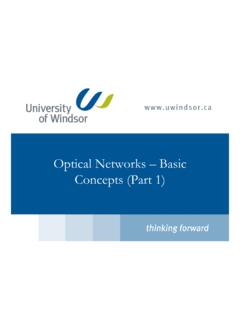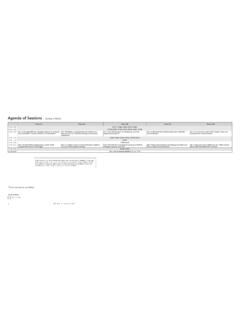Transcription of 5G RAN CU - DU Network Architecture, Transport Options …
1 5G RAN CU - DU Network Architecture, Transport Options and Dimensioning v Page 1 (35) 5G RAN CU - DU Network Architecture, Transport Options and Dimensioning, Version , 12 April 2019 5G RAN CU - DU Network architecture, Transport Options and dimensioning by NGMN Alliance Version: Date: 12-April-2019 Document Type: Final Deliverable (approved) Confidentiality Class: P - Public Project: RAN functional split and x-haul Editor / Submitter: Richard MacKenzie (BT) Contributors: Javan Erfanian (Bell Canada); Richard MacKenzie, Neil Parkin, Andy Sutton, Dave Townend, Peter Willis (BT); Jinri Huang (China Mobile); Mark Grayson (Cisco); Josef Roese, Dimitris Siomos, Wolfgang Stoermer (Deutsche Telekom); Kang Wang, Yu Yang (Huawei); Nader Zein (NEC); Philippe Sehier (Nokia); Philippe Chanclou, Cyril Del tr , Charles Hartmann, Steve Jones (Orange); Giwan Choi (SK Telecom); Brett Christian (Sprint); Marc Kneppers (Telus); Jovan Golic (TIM); John Kay (US Cellular); Jian Yang, Yuanbin Zhang (ZTE) Approved by / Date: NGMN Board, 12th April 2019 2019 Next Generation Mobile Networks e.
2 V. All rights reserved. No part of this document may be reproduced or transmitted in any form or by any means without prior written permission from NGMN e. V. The information contained in this document represents the current view held by NGMN on the issues discussed as of the date of publication. This document is provided as is with no warranties whatsoever including any warranty of merchantability, non-infringement, or fitness for any particular purpose. All liability (including liability for infringement of any property rights) relating to the use of information in this document is disclaimed. No license, express or implied, to any intellectual property rights are granted herein. This document is distributed for informational purposes only and is subject to change without notice.
3 Readers should not design products based on this document. Page 2 (35) 5G RAN CU - DU Network Architecture, Transport Options and Dimensioning, Version , 12 April 2019 Abstract The 5G RAN architecture allows for a range of deployment Options , supporting a range of 5G services. There are multiple Options on functional split (how the RAN can be disaggregated into distributed and centralised components), which offer different trade-offs. As the industry progresses, we are starting to understand more details about these trade-offs. This document aims to provide latest updates on the functional split Options that might be considered for 5G, and provide insight into how these splits might be deployed The 5G RAN has two main functional splits Options : high layer split (HLS) and low layer split (LLS).
4 HLS is the more mature solution and we provide recent updates from industry activities, describe examples for Transport dimensioning, and also address security considerations. LLS is developing fast with specifications now published. We provide an overview of recent industry activities on LLS, and examples of Transport dimensioning which show significantly improved performance in comparison to compressed CPRI. Page 3 (35) 5G RAN CU - DU Network Architecture, Transport Options and Dimensioning, Version , 12 April 2019 Contents 1 Introduction .. 4 Motivation .. 4 Split Options .. 5 2 Transport Options .. 6 Dark Fibre .. 6 passive WDM .. 7 Active transparent WDM .. 8 Ethernet .. 8 Ethernet Over Dark Fibre.
5 8 Ethernet Services .. 9 FlexE and .. 9 optical Transport Network .. 10 Microwave and mm-wave .. 11 GPON, XGPON, XGSPON, NGPON2 and beyond .. 14 Free Space Optics .. 15 3 High Layer Split .. 16 Industry Updates .. 16 3 GPP .. 16 O-RAN Alliance .. 16 Dimensioning Transport Network .. 17 Capacity based analysis .. 17 Security .. 18 Threats and needs .. 18 Solutions and Options .. 20 4 Low Layer Split .. 22 Industry updates .. 22 CPRI Cooperation .. 22 IEEE 1914 .. 22 IEEE .. 23 Small Cell Forum .. 23 Telecommunication Technology Association of Korea (TTA) .. 23 Telecom Infra Project .. 24 xRAN Alliance/O-RAN Alliance .. 24 Dimensioning - Capacity-based analysis.
6 30 LLS scalability for Massive MIMO .. 30 User plane .. 30 Control plane .. 31 Considerations on peak versus average rate .. 31 5 Conclusions .. 32 Abbreviations .. 33 References .. 34 Page 4 (35) 5G RAN CU - DU Network Architecture, Transport Options and Dimensioning, Version , 12 April 2019 1 INTRODUCTION Motivation The 5G RAN has a number of architecture Options , such as how to split RAN functions, where to place those functions, and what Transport is required to interconnect them. In [1] an overview was provided of the architecture Options and the various tradeoffs, along with industry status updates. This document focusses more on the Transport Options that may be used within the 5G RAN. We start with an overview of the Transport Options that could be considered, providing the latest industry status, commenting on the maturity of the solutions, and finally a summary of their pros and cons.
7 Next, we consider the high layer split (HLS). This solution is more mature than the low layer split (LLS) but there have still been some notable industry updates, which are summarized here. We then provide an example of the capacity-based Transport dimensioning for a cell site that uses the HLS. This work then considers security considerations for HLS, first discussing security threats, followed by potential solutions. In particular a comparison of IPSec and SCTP DTLS is provided. The focus then switches to the LLS. Since the publication of [1] there have been significant industry updates and progress, which are summarized here. We then move onto capacity-based dimensioning for LLS, using the xRAN/O-RAN Alliance latest specification (xRAN is now merged into the O-RAN Alliance).
8 These indicative numbers show the potential decrease in throughput requirements in comparison to compressed CPRI, and are also used in the discussion about traffic dimensioning considerations for the LLS. This document therefore provides an industry update, but more importantly highlights the Transport Options that an operator may wish to use in the 5G RAN, along with indicative numbers for Transport dimensioning with both HLS and LLS solutions. Page 5 (35) 5G RAN CU - DU Network Architecture, Transport Options and Dimensioning, Version , 12 April 2019 Split Options Figure 1 provides an overview of the different possible split Options for a disaggregated RAN. The top part was outlined initially in 3 GPP Release 14 study on radio access architecture and interfaces [2] based on an E-UTRA protocol stack.
9 The lower part shows the general characteristics associated with different splits, in particular highlighting the trade-off between cost and complexity versus latency and Transport requirements. Figure 1 - Functional split Options (upper part of figure from [2]) [1] discusses these Options in more detail, summarising them as either high layer split (HLS), split Options 1-5 using 3 GPP terminology, or a low layer split (LLS), split Options 6-8 using 3 GPP terminology. There are even investigations into an option 9 split [3], where the RF is digitised and centralised, which could have lower Transport requirements than CPRI (option 8). Option 7 also has several variants (see Figure 2), commonly referred to as option 7-3, 7-2 and 7-1 in downlink and 7-2 and 7-1 in the uplink.
10 These can offer different benefits and can have significantly different Transport requirements. Figure 2 - Possible option 7 functional split possibilities for DL [4] The HLS is currently focussed on option 2, while LLS is converging, but there are still several variants. In this document we show the latest status on HLS and LLS through the leading industry activities. Page 6 (35) 5G RAN CU - DU Network Architecture, Transport Options and Dimensioning, Version , 12 April 2019 2 Transport Options As identified in NGMN s earlier whitepaper [1], an operator has a variety of Options regarding the location of RAN functions such as Radio Unit (RU), Distributed Unit (DU) and Centralized Unit (CU). The decision depends on a range of factors including whether to use physical or virtual Network functions, compute resource capabilities within the Network , the Transport Options available, and the 5G services to be supported.


